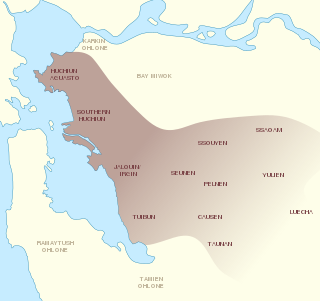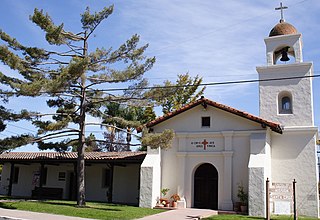
Virginia City is a census-designated place (CDP) that is the county seat of Storey County, Nevada, and the largest community in the county. The city is a part of the Reno–Sparks Metropolitan Statistical Area.
Ramparts was a glossy illustrated American political and literary magazine, published from 1962 to 1975 and closely associated with the New Left political movement. Unlike most of the radical magazines of the day, Ramparts was expensively produced and graphically sophisticated.

The Comstock Lode is a lode of silver ore located under the eastern slope of Mount Davidson, a peak in the Virginia Range in Virginia City, Nevada, which was the first major discovery of silver ore in the United States and named after American miner Henry Comstock.

The Virginia and Truckee Railroad is a privately owned heritage railroad, headquartered in Virginia City, Nevada. Its private and publicly owned route is 14 miles (23 km) long. When first constructed in the 19th century, it was a commercial freight railroad which was originally built to serve the Comstock Lode mining communities of northwestern Nevada.

Xavier Timoteo Martínez was a California artist active in the late 19th and early 20th century. He was a well-known bohemian figure in San Francisco, the East Bay, and the Monterey Peninsula and one of the co-founders of two California artists' organizations and an art gallery. He painted in a tonalist style and also produced monotypes, etchings, and silverpoint.

Milton "Mel" Stewart was an American character actor, television director, and musician who appeared in numerous films and television shows from the 1960s to the 1990s. He is best known for playing Henry Jefferson on All in the Family and for playing section chief Billy Melrose on the television series Scarecrow and Mrs. King. Stewart is sometimes credited as Melvin Stewart or Mel Stuart.

The Tamien people are one of eight linguistic divisions of the Ohlone (Costanoan) people groups of Native Americans who live in Northern California. The Tamien traditionally lived throughout the Santa Clara Valley. The use of the name Tamien is on record as early as 1777, it comes from the Ohlone name for the location of the first Mission Santa Clara on the Guadalupe River. Father Pena mentioned in a letter to Junipero Serra that the area around the mission was called Thamien by the native people. The missionary fathers erected the mission on January 17, 1777, at the native village of So-co-is-u-ka.

The Chochenyo are one of the divisions of the indigenous Ohlone (Costanoan) people of Northern California. The Chochenyo reside on the east side of the San Francisco Bay, primarily in what is now Alameda County, and also Contra Costa County, from the Berkeley Hills inland to the western Diablo Range.
Edward Farris Storey was a Nevada settler who was killed during the Paiute War. Storey County, Nevada, was named in his honor.

William Heick was a San Francisco-based photographer and filmmaker. He is best known for his ethnographic photographs and documentary films of North American Indian cultures.Heick served as producer-director and chief cinematographer for the Anthropology Department of the University of California, Berkeley on their National Science Foundation supported American Indian Film Project. His photographs capture the life and culture of Native Americans from the Kwakiutl, Kashaya Pomo, Hupa, Navajo, Blackfoot and Sioux. He filmed a number of award winning films in this series along with the documentaries Pomo Shaman and Sucking Doctor, a Pomo doctoring ceremony considered by anthropologists to be one of the most complete and outstanding films of an aboriginal ceremony made to date.
Terry Alan Fox was an American Conceptual artist known for his work in performance art, video, and sound. He was of the first generation conceptual artists and he was a central participant in the West Coast performance art, video and Conceptual Art movements of the late 1960s and early 1970s. Fox was active in San Francisco and in Europe, living in Europe in the latter portion of his life.

Joseph Thomas Del Pesco is a contemporary art curator and arts writer. He is currently the International Director of Kadist.
JB Blunk (1926–2002) was a sculptor who worked primarily in wood and clay. In addition to the pieces he produced in wood and ceramics, Blunk worked in other media, including jewelry, furniture, painting, bronze, and stone.

Warren James Hinckle III was an American political journalist based in San Francisco. Hinckle is remembered for his tenure as editor of Ramparts magazine, turning a sleepy publication aimed at a liberal Roman Catholic audience into a major galvanizing force of American radicalism during the Vietnam War era. He also helped create Gonzo journalism by first pairing Hunter S. Thompson with illustrator Ralph Steadman.

Awaswas, or Santa Cruz, is one of eight Ohlone languages. It was historically spoken by the Awaswas people, an indigenous people of California.

Pedro Joseph de Lemos was an American painter, printmaker, architect, illustrator, writer, lecturer, museum director and art educator in the San Francisco Bay Area. Prior to about 1930 he used the simpler name Pedro Lemos or Pedro J. Lemos; between 1931 and 1933 he changed the family name to de Lemos, believing that he was related to the Count de Lemos (1576–1622), patron of Miguel de Cervantes. Much of his work was influenced by traditional Japanese woodblock printing and the Arts and Crafts Movement. He became prominent in the field of art education, and he designed several unusual buildings in Palo Alto and Carmel-by-the-Sea, California.
Hispanic and Latino Americans in San Francisco form 15.1% of the population. The city's population includes 121,744 Hispanics or Latinos of any race. The principal Hispanic groups in the city were those of Mexican (7.4%), Salvadoran (2.0%), Nicaraguan (0.9%), Guatemalan (0.8%), and Puerto Rican (0.5%) ancestry. The Hispanic population is most heavily concentrated in the Mission District, Tenderloin District, and Excelsior District.
The Feminist Art Coalition (FAC) is a collaboration of over 100 art museums and nonprofit institutions from across the United States. The organizations are collectively creating a series of programming and exhibitions centered around feminist thought to be held beginning in the fall of 2020, during the run-up of the presidential election. The project was initially planned to occur from September through November 2020, but has been extended through the end of 2021 due to changes in exhibition schedules resulting from the COVID-19 pandemic.

Godmonster of Indian Flats is a 1973 American Western horror film written and directed by Fredric Hobbs, and starring Christopher Brooks, E. Kerrigan Prescott, Karen Ingenthron and Stuart Lancaster. Set in a mining and "Old West" tourism community in northern Nevada, the plot depicts the accidental creation of a giant sheep monster that terrorizes the town, as well as a plot about race relations in the 1970s American West.

Troika is a 1969 American comedy anthology-art film written, directed, and produced by artist-turned-filmmaker Carl Fredric Hobbs. It stars Hobbs, Richard Faun, Morgan Upton, Nate Thurmond, Gloria Rossi, and members of the San Francisco Art Institute. The plot is composed of three separate stories threaded together around a central storyline about a fictional version of director Hobbs attempting to gain financing for a film of the same name.














